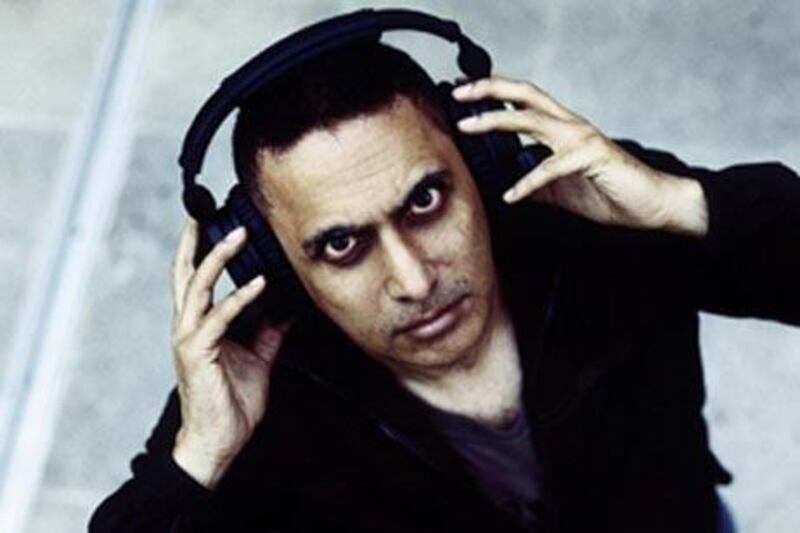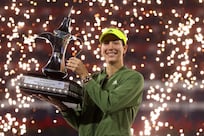The Olympics has always equalled sporting excellence but a new UK cultural initiative is ensuring that the forthcoming 2012 London games will also be associated with artistic greatness. The Artists Taking the Lead project, run by the Arts Council England (ACE) as part of the Cultural Olympiad programme, is giving British artists the opportunity to compete for a grant of up to £500,000 (Dh3m) to help realise their unique artistic concept and unveil it in conjunction with the Olympic games.
This month a shortlist of 59 artists has been announced, drawn from a pool of over 2,000 UK entrants, spanning a huge range of art forms. The Games are watched by billions of viewers worldwide and for those selected, the potential global coverage offered could be life-changing. For the organisers in the host nation, the ramifications are also significant. They are directly accountable, committed to spending billions of pounds of public money and likely to harangued by a public made anxious by the recession. Key to the plans of London 2012 is the creation of something enduring that will cement the prominence of the city in the global imagination and celebrate its unrivalled cultural and historical diversity.
This diversity is reflected in the variety of artworks shortlisted for the ACE initiative. From using London bus stops to tell stories across the capital to an Arctic island the size of a football pitch towed around the south-west coast, the commissions are wide-ranging in concept and ambitious in scope. Each one promises to push culture to the top of the sporting agenda and showcase the country's wider artistic talents.
"The standard of entries has been incredibly high," says Amanda Smethurst, the London Director of ACE. "We have been looking for original ideas that reflect or are inspired by the location in which they will take shape. We really want ideas that will leave a legacy for communities and artists beyond 2012, ones that celebrate London 2012 and reflect the values of the Cultural Olympiad. In addition to fitting into this criteria, the work needs to have the wow factor. It needs to excite and stand out from the crowd."
The quality of the shortlist is suggestive of the effort that is being put in to distinguish the London games from other recent Olympics - perhaps due in part to the financial challenges that have dogged organisers since the games were awarded to the UK capital four years ago. In a time of economic decline, the Games need to be increasingly inclusive in order to maintain public support for the project. By seeking out some of the UK's most inspiring artists and unlocking creativity and talent all around the country, ACE will draw attention to and provide opportunities for some of Britain's finest artists, while simultaneously involving communities in a Cultural Olympiad flagship commission.
A winning artwork will be announced for each of the nine English regions and one each for Northern Ireland, Scotland and Wales, with a total commission pot of £5.4m (Dh32m). The 12 successful commissions from across the UK will be developed in 2010 and 2011 in close collaboration with local communities. All 12 will take part in a final unifying celebration prior to the opening of the London games. It is hoped that these works will impact positively on the way that local people look at and experience their cities.
Potential highlights include a spinning column of cloud rising from Liverpool's docks; an extraordinary wingless bird which will travel across Wales; cloud sculptures generated from disused chimney stacks across Scotland; thousands of beehives set up and cared for by artists to reverse the decline of the honeybee in the East of England, and three giant lions made of crochet installed in a glass case in Nottinghamshire.
"We want to animate London in subtle and extraordinary ways, working with international artists and our global population to bring people closer to the spirit of the Games," says Auro Foxcroft who, together with his artistic partner Simon Elliott, intends to breathe life into London's architecture. For Kate McGrath, the director of the production company Fuel, the commission is "all about trying to make people's days a little better". Proposing to create an imaginary world on the London Underground, the company aims to transform London tube stations and carriages into places of childhood fascination, spaces where journeys become synonymous with adventure. "From first thing in the morning to the last tube home, Londoners spend hours underground. We're excited about working with inspiring artists to create unexpected moments of adventure on the Tube. The possibilities are thrilling," she says.
The highly acclaimed musician Nitin Sawhney proposes the Global Bedroom Orchestra, where an international global orchestra of performers based in their bedrooms would perform a specially composed piece with a live British orchestra. The performance would be in the open air and the virtual players would be both broadcast simultaneously and projected onto the windows of an iconic London building, performing in perfect synchronisation with the live orchestra. Based on the paradoxical themes of isolation and global connectivity, the project would feature choreographed freerunners and reflect London's multicultural communities. "My commission is really about the spirit of collaboration," says Sawhney. "One of the main things about the Olympics is that it represents the idea of challenge and international confrontation; what I wanted to do was to remind us of the communality between nations. My work is a response to the competitive values the Olympics promotes.
"There is also a kind of common spirit between musicians that keeps them together even when they are practising in isolation. They often sit and work in their bedrooms, but it is very rare that people get to see them in that space. What I want to do is to create a situation in which orchestral players from around the world can actually perform in the solitude of their bedrooms and still be connected. This project challenges our perception of international boundaries and demonstrates how we are all connected by our dreams."
In the East Midlands, the artist Jo Fairfax proposes creating an extraordinary visual display of sculptural light hovering above two fields. Made from 10,000 sculptural forms hanging from fine nylon cables, the piece will be visible from trains passing through, planes flying over and travellers on the M1 motorway. The movement of trains will activate the lights on the artwork and depending on their speed, a new array of colours will be produced each time, creating an aura of changing colour either side of the railway line across each field.
"We will have 2012 lights," says Fairfax. "It will be quite magical, quite beautiful, like a field of corn, but in light. It will of course act as a celebration of the Olympics. Uniting sport and art is part of being a holistic being. It's important to remain physically fit to maintain a creative mind. The work will also, however, continue living as a piece of art after the Games are over. Every single child in the East Midlands will receive information about the symbolism of the light and they will be able to vote annually for the colour spectrum to be used. This will inspire them about the nature of art and light."
Elsewhere, State of Emergency proposes Desert Crossings, a unique international collaboration with the South African choreographer, Gregory Maqoma of Vuyani Dance Theatre. There will be a site-specific work and participatory workshops inspired by the Jurassic coastline of Devon and its perceived similarities to Namibia's Skeleton Coast. Following this, a performance and specially commissioned dance film will tour nationally and internationally. The artist Deborah Baddoo will be working with partners across the South West, London and in South Africa
"This is a multi-racial project and one that will encourage audience members to get involved in workshops and activities," says Baddoo. "It is a fantastic opportunity to welcome the world to Britain and show them the best of what we have to offer. It is going to open up a global dialogue between sports fans and art lovers that will keep us all talking for years to come."










